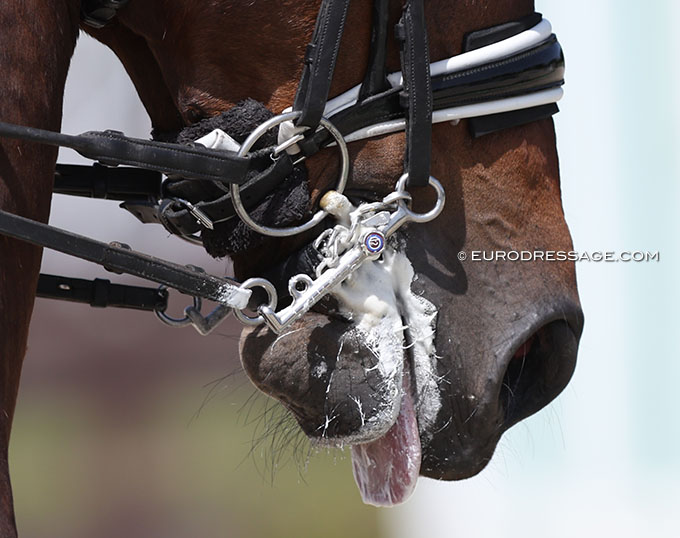
Minna Tallberg (FIN) is a former equestrian photographer and freelance journalist, who now works as a horse trainer and writer of horse training books. She has a special interest in learning theory, behaviour, and welfare issues. She has two vocational animal training qualifications and holds webinars and live lectures on horse training and behaviour in Finnish, Swedish and English.
Letter to the IDRC, IDTC, and FEI
I read the letter from the IDRC and IDTC to the FEI first with interest, then disbelief and finally amusement. The letter (now removed from the IDRC website but which can be read on Eurodressage at https://eurodressage.com/2022/10/05/joint-letter-idrcidtc-sparks-controversy-and-debate-social-licence) is a prime example of why the people most involved with any sport are not the only ones who should be given the license to ensure the welfare of those involved in these sports. If you are an international rider, trainer or judge, you are one of those benefiting from the status quo. Current rules and practises are your friend. Change can be seen as a threat. Even, as was proposed, a change to make a double bridle optional. As in you could use a snaffle bridle if you wanted to. Or a double. Choice.
The letter reads like a list of logical fallacies. We have the slippery slope fallacy, the straw man fallacy, the definist fallacy, the false attribution fallacy and the appeal to authority one.
My favourite sentence (no, of course I'm joking, it's the most strange one) is this: "The snaffle produces the flexion and exercises the muscles whereas the double bridle produces the bending of the haunches" - as we say online, what the hell did I just read? The snaffle exercises the muscles? The double bridle produces the bending of the haunches? With the same letter calling for scientific proof, the absurdity is complete. Waiting with bated breath for the scientific proof that the snaffle exercises other muscles than those of the underneck, if the rider pulls the reins.
Training exercises the muscles. Teaching the horse to respond to the riders aids and gradually increasing the intensity of the work using different movements that prepares the horse for collection will aid the bending of the haunches. Not the double bridle in itself. Or if you like, you can use shaping and positive reinforcement to get the horse to collect itself. Or any of a number of other ways.
I've been a dressage riding enthusiast since about 1986. I have followed the sport intensively since then and meanwhile worked as a journalist, photographer and now as an animal trainer currently making a living teaching horse enthusiasts how to train their horses, lecturing on horse behaviour, learning and welfare and writing horse training books.
Dressage is a supremely difficult art/sport and at its best, incredibly beautiful. But it's not immune to horse welfare nor are the rules set in stone. With current research comes the need for change everywhere in society. Dressage is no exception.
From research we now know, among other things, that not all horses have room for two bits in their mouth. Not all horses have room even for one bit in their mouth. We know mouth injuries are frequent in trotting and eventing horses, that horses show clear indications of pain in their behaviour and expression and that most ridden horses' nosebands are too tight. We know that horses have lesions in the nasal bone at the site of the noseband. We also know too many horses show signs of pain, discomfort or conflict behaviour in dressage.
With increased knowledge comes a moral obligation to change to improve horse welfare. Not, like the letter IDRC/IDTC sent, to go into a hedgehog mode of defence and object to even the slightest change which would improve horse welfare in dressage. I love dressage. I love the horses more. Moving with the times to improve horse welfare is imperative if we are to have a future with that most important thing, social license to operate.

Starting to measure noseband tightness the way it should be, on top of the nasal bone, and implementing the two-finger rule at every show would cost nothing but improve horse welfare and social license.
Allowing riders not to have spurs (or even fake spurs, as some exceedingly sensitive horses react even to smooth metal on the riders' boots) would cost nothing and improve horse welfare and social license.
I had a dream once that every horse sport organisation and all people involved in the sport would make the changes needed proactively, as new research is published. Not leave it until the goverments of different countries make change mandatory. Then I woke up.
You can't put the fox in charge of the hen house (or as we say in Finland, the goat in charge of the cabbage patch) nor can you leave improving horse welfare to those benefiting most from the current situation. What we need, if horse sport is to continue, is objective measurements and yes, change. Why not change?
Some additional reading:
https://www.ncbi.nlm.nih.gov/pmc/articles/PMC9133790/ Oral Dimensions Related to Bit Size in Adult Horses and Ponies
https://beva.onlinelibrary.wiley.com/doi/abs/10.1111/evj.12827 Lesions associated with the use of bits, nosebands, spurs and whips in Danish competition horses
https://www.sciencedirect.com/science/article/abs/pii/S1558787811001432 The effect of double bridles and jaw-clamping crank nosebands on temperature of eyes and facial skin of horses
https://pubmed.ncbi.nlm.nih.gov/32947819/ Prevalence and Distribution of Lesions in the Nasal Bones and Mandibles of a Sample of 144 Riding Horses
https://www.ncbi.nlm.nih.gov/pmc/articles/PMC5207535/
https://www.sciencedirect.com/science/article/abs/pii/S1558787810000626
https://www.ncbi.nlm.nih.gov/pmc/articles/PMC7552251/
https://www.ncbi.nlm.nih.gov/pmc/articles/PMC5207410/
Related Links
Dr. Inga Wolframm: "What is a Piece of Tack?"
Joint Letter from IDRC/IDTC Sparks Controversy and Debate on Social Licence
David Hunt: The Double Bridle as a Sport Issue, not a Welfare Issue